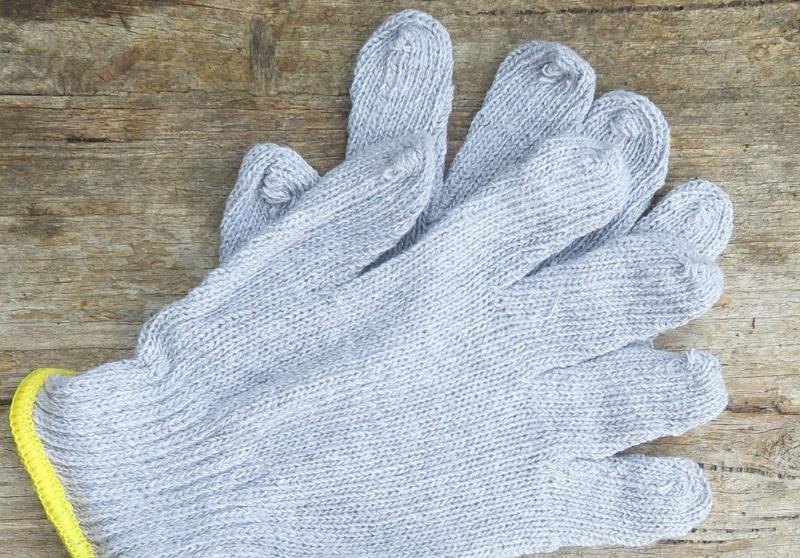
Different safety measures apply to different industrial work practices. For example, platform work cages help improve safety while working at height; nets, toe rails, and toe boards help prevent objects from failing at workers in warehouse shelving; a lockout or tag-out device helps protect workers from accidental machine start-ups. But there is one safety measure that applies basically to all industries: hand protection.
Employees’ hands are needed for everything from heavy lifting to precise finishing. Whether they are lifting, digging, pounding, using power tools and equipment, or assembling goods in quantities ranging from one to many, their hands are the vital connection between them and the task at hand. They need to keep their hands warm, dry, and free from any physical dangers such as abrasion, crushing, wounds, vibration, and impact so that they can continue to use all of their fingers and toes.
Safety gloves are a type of industrial hand protection equipment that has been shown to help prevent approximately 25% of workplace accidents that include hand and finger injuries. A wide range of gloves is available to meet each industry’s needs. Identifying the types of threats to which your employees’ hands are exposed can assist you in selecting the industrial hand protection solution that is right for your environment and professional activity.
Coated Gloves

Fabric is stretched over a mold to create coated gloves, which are then submerged in polymer. A variety of materials can be used to create both the base shell and the polymer dip. Common materials used for shells include cotton (cheap, comfortable), nylon (strong, cut-resistant), spandex (also known as lycra or elastane), Kevlar (very strong, heat- and cut-resistant), polyester (good general properties), glass fiber (cut-resistant), and acrylic (warm in cold environments). Some glove shells incorporate a number of these fibers.
Throughout the manufacturing process, the shell material can be dipped into the polymer at different depths and angles to produce coatings on the palm, fingertips, 34 dip (the palm, fingers, and back of the hand are completely coated), and full dip (the entire glove is coated).
The grip that these gloves offer allows users to safely handle tools, equipment, and objects. The textured surface increases friction, even in damp or oily circumstances, for a secure grip. This characteristic is especially important in industry fields that require accuracy and control.
Their coating also acts as a protective barrier, reducing the risk of injuries caused by rough surfaces or sharp objects.
Welding Gloves
There are several health and safety risks associated with welding. Burns are the most frequent hazard and injury for a welder due to sparks and molten metal pieces landing on the skin. Wearing welding gloves can help prevent exposure to hot metal, sparks, and other flying metal as well as to jagged edges and other sharp metal objects.
The most common type of material used to make welding gloves is leather. That is because it offers the perfect level of flexibility and protection for molten metal spatter, arc rays, hot metal and sparks.
You’ll want to look for a welding glove that is thick enough to not burn, shrivel or get worn out quickly. Different types of leather offer different levels of protection, comfort and durability. Here is how welding gloves are labelled:
- TIG Welding Gloves: These are made from goat, pig, and cow leather and offer great sensitivity to the finger area without compromising protection.
- MIG Welding Gloves: These are made from cow, pig and dear leather offer maximum protection with some dexterity.
- Stick Welding Gloves: These made from elk or cow leather are the most robust type of welding glove.
Polycotton Gloves

Knit gloves made of poly/cotton are affordable, hypoallergenic, breathable, and comfortable. They work well in packhouses, light manufacturing, assembly, component handling, and engineering.
To improve warmth, comfort, and grip in some applications, this type of glove can also be worn over other types of gloves, such as rubber chemical-resistant gloves.
Chemical-Resistant Gloves
Chemical-resistant gloves are necessary when working with abrasive or dangerous materials, handling food or fuel, cleaning, in healthcare facilities, or in damp or chilly climates. Chemical-resistant gloves may have a permeable inner lining for warmth and comfort in wet applications.
The material the glove is made from affects its protection and resistance. Materials that are commonly used include:
- Butyl – A synthetic rubber, it offers excellent resistance to peroxides, extremely corrosive acids, powerful bases, ketones, esters, and nitro compounds. Due to its lack of stiffening, butyl is resistant to oxidation and abrasion and performs well in cold temperatures.
- Latex – These gloves are a great option for general use and are typically regarded as comfortable. They have good flexibility, perform well in both hot and cold environments, and are resistant to water solutions of acids, alkalis, salts, and ketones. Some employees might not be used because they are allergic to latex.
- Neoprene – Very dense and tear-resistant gloves. They are also incredibly malleable, allowing for finer manipulation. It is generally considered a better option than latex.
Cut-Resistant Gloves

Cut-resistant gloves are made of thick glass, Kevlar, or HPPE (high-performance polythene) fibres that protect the hands from scratches, cuts, and abrasions from sharp objects, such as blades, knives, glass and tools in automotive and construction work, hence reducing the risk of injury. Although they are not necessarily cut or puncture-resistant, they offer great resistance to sharp objects that can pierce through or rip the glove.
Leather Gloves
Before the current synthetic materials were accessible, leather was the de facto industry standard for safety gloves. Even today, people still value its many advantages: it is extraordinarily strong, heat-resistant, naturally insulating, and yet breathable. Leather gloves are very hard to rip, tear, or puncture while performing routine daily work.
Premium leather gloves are made from the hide’s tough, smooth outer layer (or grain side). Lower-cost gloves use the bottom layer (or suede side). Suede leather is still functional, although it is not as robust, resilient, or dextrous as full-grain leather.









